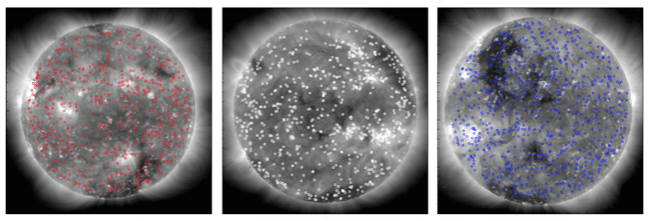
Earth's weather patterns and jet streams are caused by giant ripples known as planetary waves or Rossby waves. Now, researchers have found a similar feature on the Sun, just on a more massive scale.
Also Read: Crazy asteroid spinning the wrong way is playing a 'game of chicken' with Jupiter!
Rossby waves were first discovered in the Earth's atmosphere in the late 1930s. These waves are said to affect local weather.
Rossby waves were recently identified on the Sun, studying these waves could aid scientists better predict sunspots and solar flares.
The research was carried out by Scott McIntosh, a scientist at the National Center for Atmospheric Research (NCAR), William Cramer of Yale University, Manuel Pichardo Marcano of Texas Tech University, and Robert Leamon of the University of Maryland, College Park.
"The discovery of magnetised Rossby waves on the Sun offers the tantalising possibility that we can predict space weather much further in advance," said McIntosh in a statement.
These waves are linked to high and low pressure formations, and jetstream paths, which have a direct affect on the weather.
These waves originate in any rotating fluid, according to McIntosh. The Sun rotates too, and its plasma, which acts like a huge magnetised ocean, leads to the formation of these waves.
"Scientists have lacked the tools to distinguish this wave pattern until recently. Unlike Earth, which is scrutinised at numerous angles by satellites in space, scientists historically have been able to study the Sun from only one viewpoint: as seen from the direction of Earth."
Researchers were able to observe the entire solar atmosphere closely from 2011 to 2014, during this period observations were made from NASA's Solar Dynamics Observatory (SDO). Researchers also used the measurements made by NASA's Solar TErrestrial RElations Observatory (STEREO) mission with the help of two spacecraft orbiting the Sun.
The team of researchers analysed the data, which provided them form a 360-degree view of the Sun until 2014 (when they lost contact with one of the STEREO spacecraft). The data was used to detect the emergence of any large-scale wave patterns on the Sun.
"By combining the data from all three satellites we can see the entire sun and that's important for studies like this because you want the measurements to all be at the same time," said Dean Pesnell, SDO project scientist at NASA's Goddard Space Flight Center in Greenbelt, Maryland.
"They're pushing the boundary of how we use solar data to understand the interior of the sun and where the magnetic field of the sun comes from," Pesnell added.
The researchers used the images collected to detect the coronal bright points, which were present all over the solar surface. They used these points to track the motion taking place in the deeper solar atmosphere.
Various solar phenomena, ranging from the origin of Sun's 11-year solar cycle, its magnetic field to the formation of sunspots and their lifespan, can be studied with the new information.
"It's possible that it's all tied together, but we needed to have a global perspective to see that," McIntosh said in a statement.
"We believe that people have been observing the impacts of these Rossby-like waves for decades, but haven't been able to put the whole picture together."
Researchers can gain a better understanding of the Sun's behaviour with the help of this research, but it would require them to analyse the 360 degree view of the Sun again and examine the waves and patterns in the solar atmosphere.
"The discovery of Rossby-like waves on the Sun could be important for the prediction of solar storms, the main drivers of space weather effects on Earth," said Ilia Roussev, program director in NSF's Division of Atmospheric and Geospace Sciences.
"Bad weather in space can hinder or damage satellite operations, and communication and navigation systems, as well as cause power-grid outages leading to tremendous socioeconomic losses. Estimates put the cost of space weather hazards at $10 billion per year," Roussev added.
"To connect the local scale with the global scale, we need to expand our view," McIntosh said. "We need a constellation of spacecraft that circle the Sun and monitor the evolution of its global magnetic field," he concluded.
This study was financed by NASA and the National Science Foundation (NSF). It will be published next week in the journal Nature Astronomy.

















